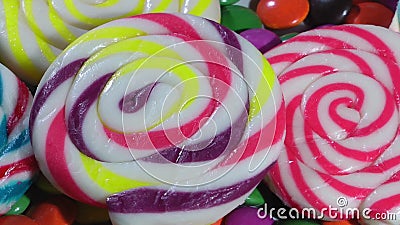

When dry, gelatin consists of 98–99% protein, but it is not a nutritionally complete protein since it is missing tryptophan and is deficient in isoleucine, threonine, and methionine. For example, gelatin derived from fish has a lower melting and gelation point than gelatin derived from beef or pork. Gelatins have diverse melting points and gelation temperatures, depending on the source. Gelatin's strength (but not viscosity) declines if it is subjected to temperatures above 100 ☌ (212 ☏), or if it is held at temperatures near 100 ☌ for an extended period of time. Commercial gelatin will have a gel strength of around 90 to 300 grams Bloom using the Bloom test of gel strength. The viscosity of the gelatin-water mixture is greatest when the gelatin concentration is high and the mixture is kept cool at about 4 ☌ (39 ☏). The upper melting point of gelatin is below human body temperature, a factor that is important for mouthfeel of foods produced with gelatin. The gel formed by gelatin can be melted by reheating, and it has an increasing viscosity under stress ( thixotropic).

Gelatin absorbs 5–10 times its weight in water to form a gel. Polar solvents like hot water, glycerol, and acetic acid can dissolve gelatin, but it is insoluble in organic solvents like alcohol. It is transparent and brittle, and it can come as sheets, flakes, or as a powder. Gelatin is nearly tasteless and odorless with a colorless or slightly yellow appearance. Photographic and pharmaceutical grades of gelatin generally are sourced from cattle bones and pig skin. Its chemical composition is, in many aspects, closely similar to that of its parent collagen. During hydrolysis, some of the bonds between and within component proteins are broken. Gelatin is a collection of peptides and proteins produced by partial hydrolysis of collagen extracted from the skin, bones, and connective tissues of animals such as domesticated cattle, chicken, pigs, and fish. Instant types can be added to the food as they are others must soak in water beforehand.Ĭharacteristics Properties

Gelatin for cooking comes as powder, granules, and sheets. Gelatin is present in gelatin desserts, most gummy candy and marshmallows, ice creams, dips, and yogurts. Gelatin is an irreversibly hydrolyzed form of collagen, wherein the hydrolysis reduces protein fibrils into smaller peptides depending on the physical and chemical methods of denaturation, the molecular weight of the peptides falls within a broad range. Substances containing gelatin or functioning in a similar way are called gelatinous substances. It is commonly used as a gelling agent in food, beverages, medications, drug or vitamin capsules, photographic films, papers, and cosmetics. It may also be referred to as hydrolyzed collagen, collagen hydrolysate, gelatine hydrolysate, hydrolyzed gelatine, and collagen peptides after it has undergone hydrolysis. It is brittle when dry and rubbery when moist. Gelatin or gelatine (from Latin: gelatus 'stiff' or 'frozen') is a translucent, colorless, flavorless food ingredient, commonly derived from collagen taken from animal body parts. For other uses, see Gelatin (disambiguation). For the gel based on starch, see Starch gelatinization. For the dessert food, see Gelatin dessert.


 0 kommentar(er)
0 kommentar(er)
